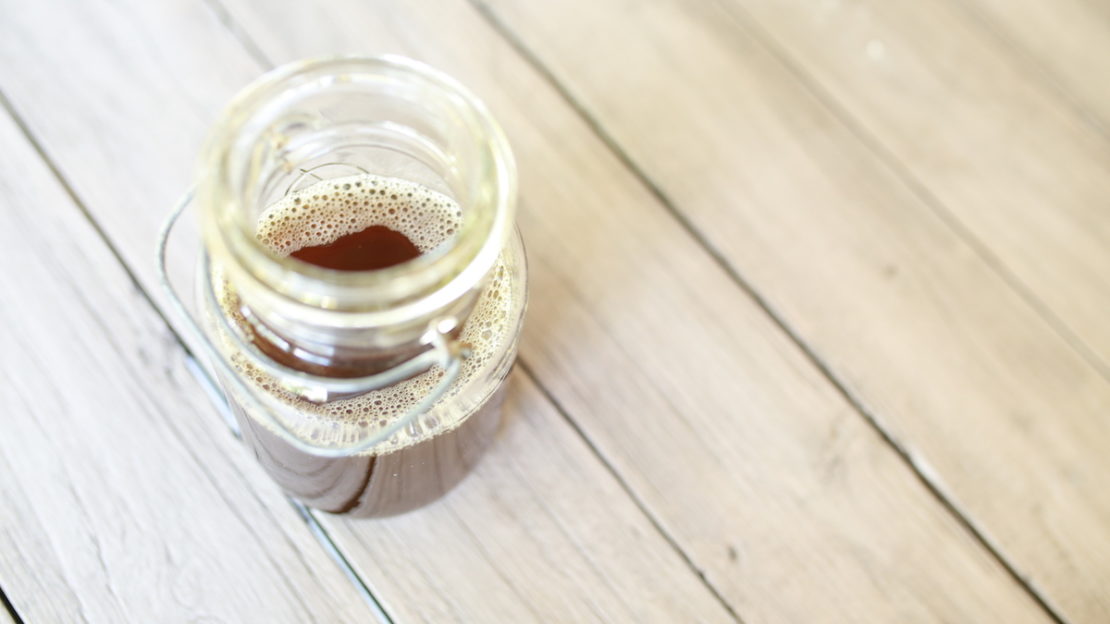
How to Make an Herbal Decoction
That simple, tasty cup of tea is only one way of extracting the many virtues of herbs into water. Other ways include the making of infusions and decoctions. Today I am going to share how to make an herbal decoction and which herbs are used for this type of herbal preparation.
Infusions are used with the softer parts of plants and require a long soak to coax vitamins, minerals, and more out of the herbs into the water. An herbal decoction is employed when extracting constituents from hard or woody plant parts such as roots, bark, seeds, berries, and mushrooms.
What is an Herbal Decoction?
So, what precisely is an herbal decoction? A decoction is an herbal preparation created by boiling herbs in liquid, usually water. Herbalist James Green explains, “the object of preparing decoctions is to secure, in aqueous solution, the soluble active principles of herbs that are hard and woody and have a close, dense texture” (Green, 2000, pg. 112).
Interestingly, decoctions just like teas, infusions, and many other forms of preparing herbs, have a long history of use. In Medical Herbalism, herbalist David Hoffmann explains that the old pharmacopeias had thorough descriptions for decoctions of various herbs with an official standard for preparation. He shares the following example for a standard preparation.
Official Decoctions (Decocta)
Decoctions must be freshly made, and when their strength is not otherwise directed, they are to be prepared by the following general formula:
The Drug, coarsely comminuted 50 g
Water, a sufficient quantity, to make 1000 mlPlace the drug in a suitable vessel provided with a cover, pour upon it 1000 cc. of cold water, cover and boil for fifteen minutes. Cool to about 400C, express, strain the expressed liquid, and pass enough cold water through the strainer to make the product measure 1000 cc.
– David Hoffmann, Medical Herbalism, pg. 222
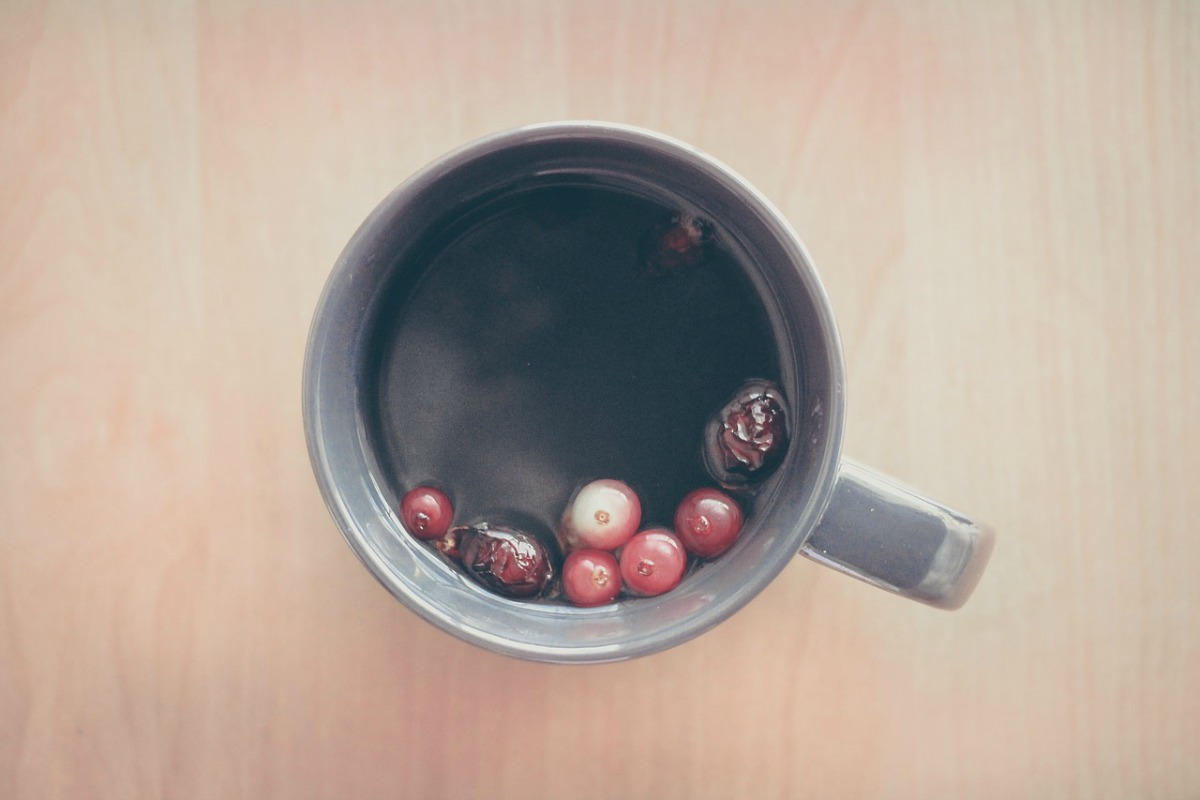
How to Make an Herbal Decoction
The above official example might sound a bit daunting. Never fear! Preparing a simple decoction doesn’t have to be hard and really is quite easy!
Basic directions for how to make an herbal decoction are as follows.
- Use one teaspoon to one tablespoon of herbs per cup of cold water.
- Add the herbs and cold water to a pot.
- Place that pot on the stove and bring up to a gentle boil.
- Put a lid on the pan and lightly simmer for twenty to forty minutes.
- Remove from the heat and let your decoction cool to drinking temperature.
- Finish up by straining out the herbs.
- You can often use these same herbs to brew up a new batch of decoction a couple more times as long as the decoction is still strong after brewing.
- Refrigerate leftovers and use within 48 hours.
4 Herbal Decoction Tips & Tricks
1. Start with cold water
It is important to start your decoctions with cold water. Placing the herbs directly into boiling water may cause the albumen within the plant cells to bind making it difficult for the other plant constituents to be liberated into the water (Green, 2000).
2. Use more herbs when your herbs are fresh
Fresh herbs have a higher water content than dried herbs. This water content can dilute your decoction so double the amount of herbs if you are using fresh herbs.
3. Grind your herbs before brewing
Many herbalists like to grind, crush, or even powder their herbs before decocting them to increase the surface area of the herb. You can do this too if you wish!
4. Infusing in a decoction
You can combine herbs that are best prepared as a decoction with herbs that do best as infusions. Simply decoct your hard, woody herbs in a pot of water. Then add the remaining herbs to the pot when you remove it from the heat to cool being sure to keep the pot covered. Let all the herbs infuse together until you are ready to drink!
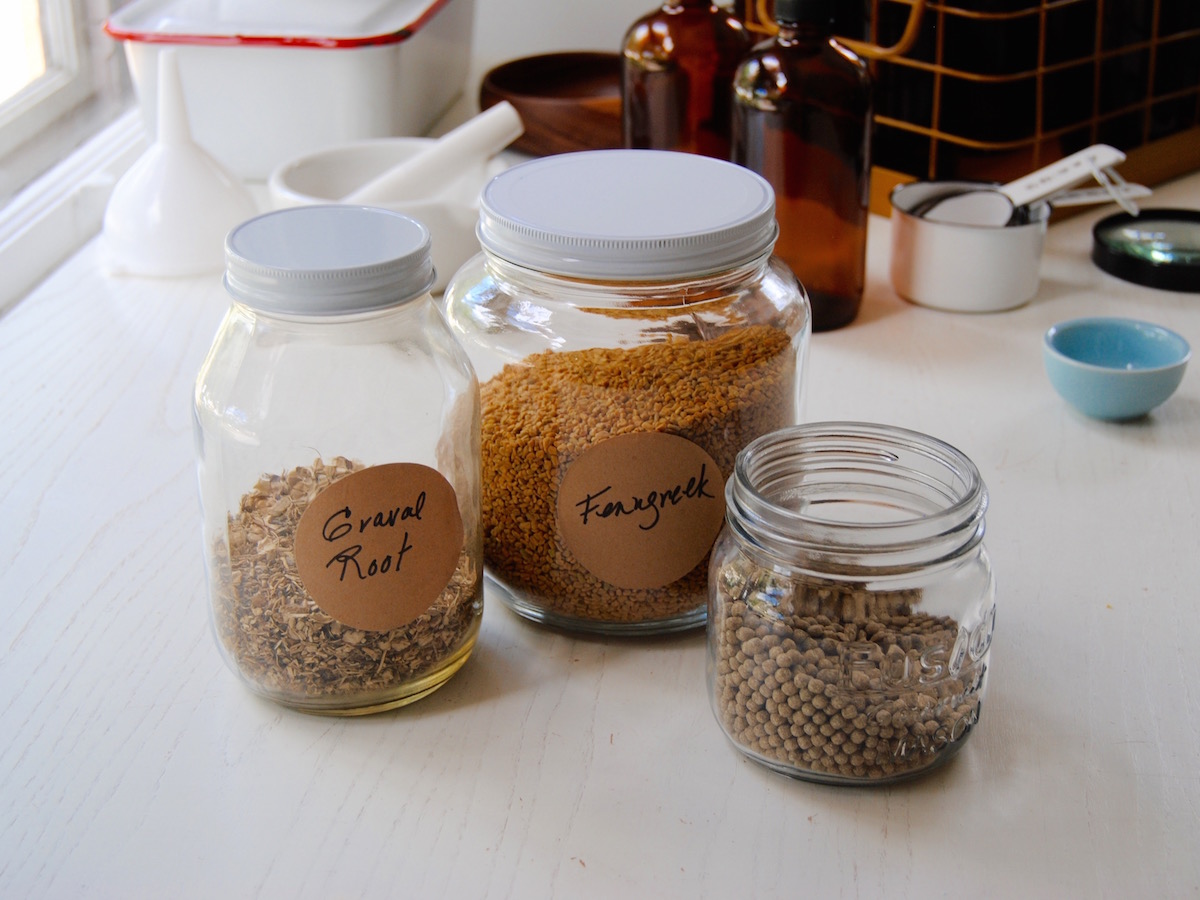
Herbs to Use
So which herbs are best brewed as a decoction? The following list of more commonly used herbs is by no means exhaustive, yet it will give you a good start. If you have questions about how to make an herbal decoction with a particular herb, it is always a good idea to do some research and learn more about the plants you are using!
While considering whether or not to brew your lovely herbs up as an infusion or a decoction, keep in mind that if the plant is high in beneficial volatile oils it is better to brew it as an infusion, otherwise the volatile oils will be lost during simmering. Examples include valerian, peppermint, goldenseal, wild cherry, and fennel (Hoffmann, 2003; Green, 2000; mcdonald, n.d.; Herbarium, n.d). Plants high in mucilage such as marshmallow and slippery elm may be best prepared as a cold infusion as opposed to a decoction.
| Roots & Rhizomes | Bark | Seeds, Nuts & Berries | Mushrooms |
| Astragalus† (Astragalus membranaceus) |
Cinnamon (Cinnamomum species) |
Cardamom (Elettaria cardamomum) |
Chaga (Inonotus obliquus) |
| Ashwagandha (Withania somnifera) |
Black Haw† (Viburnum prunifolium) |
Coriander (Coriandrum sativum) |
Cordyceps (Cordyceps sinensis) |
| Chicory (Cichorium intybus) |
Cramp Bark† (Viburnum opulus) |
Elderberry (Sambucus nigra) |
Maitake (Grifola frondosa) |
| Black cohosh* (Cimicifuga racemosa) |
Wild Cherry† (Prunus serotina) |
Fennel (Foeniculum vulgare) |
Oyster Mushroom (Pleurotus ostreatus) |
| Burdock (Arctium lappa) |
Slippery Elm*† (Ulmus rubra) |
Hawthorn (Crataegus species) |
Reishi (Ganoderma lucidum) |
| Dandelion (Taraxacum officinale) |
Willow (Salix alba) |
Kola Nut (Cola nitida) |
Shiitake (Lentinula edodes) |
| Echinacea* (Echinacea species) |
Milk Thistle (Silybum marianum) |
Turkey Tail (Trametes versicolor) |
|
| Eleuthero (Eleutherococcus senticosus) |
Rose Hips (Rosa species) |
||
| Ginger (Zingiber officinale) |
Schisandra (Schisandra chinensis, S. species) |
||
| Ginseng (Panax ginseng, P. quinquefolius*) |
Vitex (Vitex agnus-castus) |
||
| Licorice (Glycyrrhiza glabra) |
|||
| Kava (Piper methysticum) |
|||
| Marshmallow† (Althaea officinalis) |
|||
| Turmeric (Curcuma longa) |
|||
| Wild Yam* (Dioscorea villosa) |
|||
| Yellow Dock (Rumex crispus) |
* Denotes an at-risk plant. Please choose sustainably cultivated sources.
† May extract best as a cold-water infusion.
Chart created with reference to Medical Herbalism by David Hoffmann, Materia Medica Factsheets: Herbs Best Used As A Strong Decoction and Herbs Best As Cold Infusion by Michael Moore, The Medicine Maker’s Handbook by James Green, annemcintyre.com by Anne McIntyre, Medicinal Mushrooms III by Christopher Hobbs, and United Plant Savers.
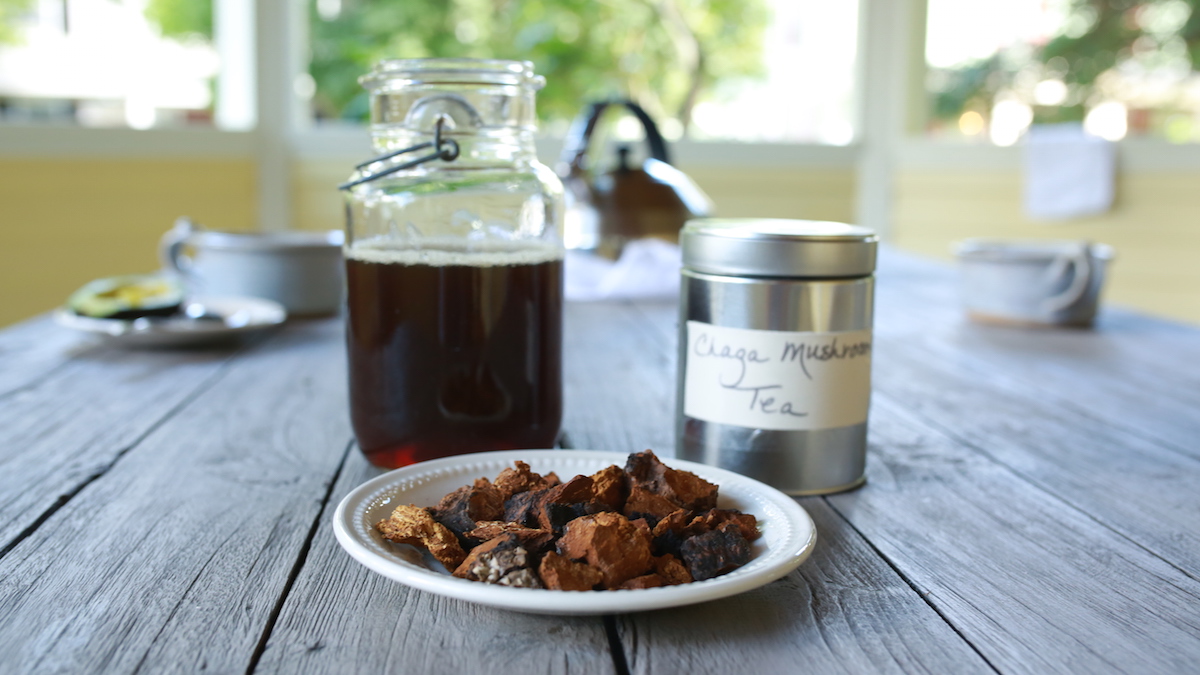
Benefits And Uses of Herbal Decoctions
Herbal decoctions can be enjoyed as more than just a strong cup of herbal brew to drink. They can become the base for an herbal syrup or used as a fomentation. The following recipes all use decoctions as the base preparation method to make delicious and healthful herbal beverages and syrups.
Beverages to Sip
- Create a delicious herbal hot cocoa
- Make a warming cup of immune boosting chai
- Find an herbed apple cider recipe perfect for the kiddos or the child within
Syrups & Oxymels to Enjoy
- This elderberry syrup is fast becoming a staple in many homes during cold and flu season; this recipe is quick and tasty!
- Make syrup with antioxidant rich grapes and immune boosting herbs
- Create an iron-rich root tonic with nourishing molasses
- Try your hand at creating a decoction with vinegar instead of water and make a delicious oxymel for your liver at the same time!
I know that tea is no minor beverage. When tea becomes ritual, it takes its place at the heart of our ability to see greatness in small things. Where is beauty to be found? In great things that, like everything else, are doomed to die, or in small things that aspire to nothing, yet know how to set a jewel of infinity in a single moment?
– Muriel Barbery, The Elegance of the Hedgehog, pg. 91
The process of making an herbal decoction just as with brewing up a fine pot of tea, can be something of a meditation or a ritual. Decoctions may take a bit longer to prepare than a cup of tea yet a lovely pot of herbs gently simmering on the stove is a reminder to breathe deep and a reminder of our connection to the Earth. May you enjoy creating this simple herbal preparation in your own home!
Want to learn more about making your own herbal preparations? The Herbal Academy’s online courses will give you all the tools you need to do just that plus so much more! Visit our course page to learn more.
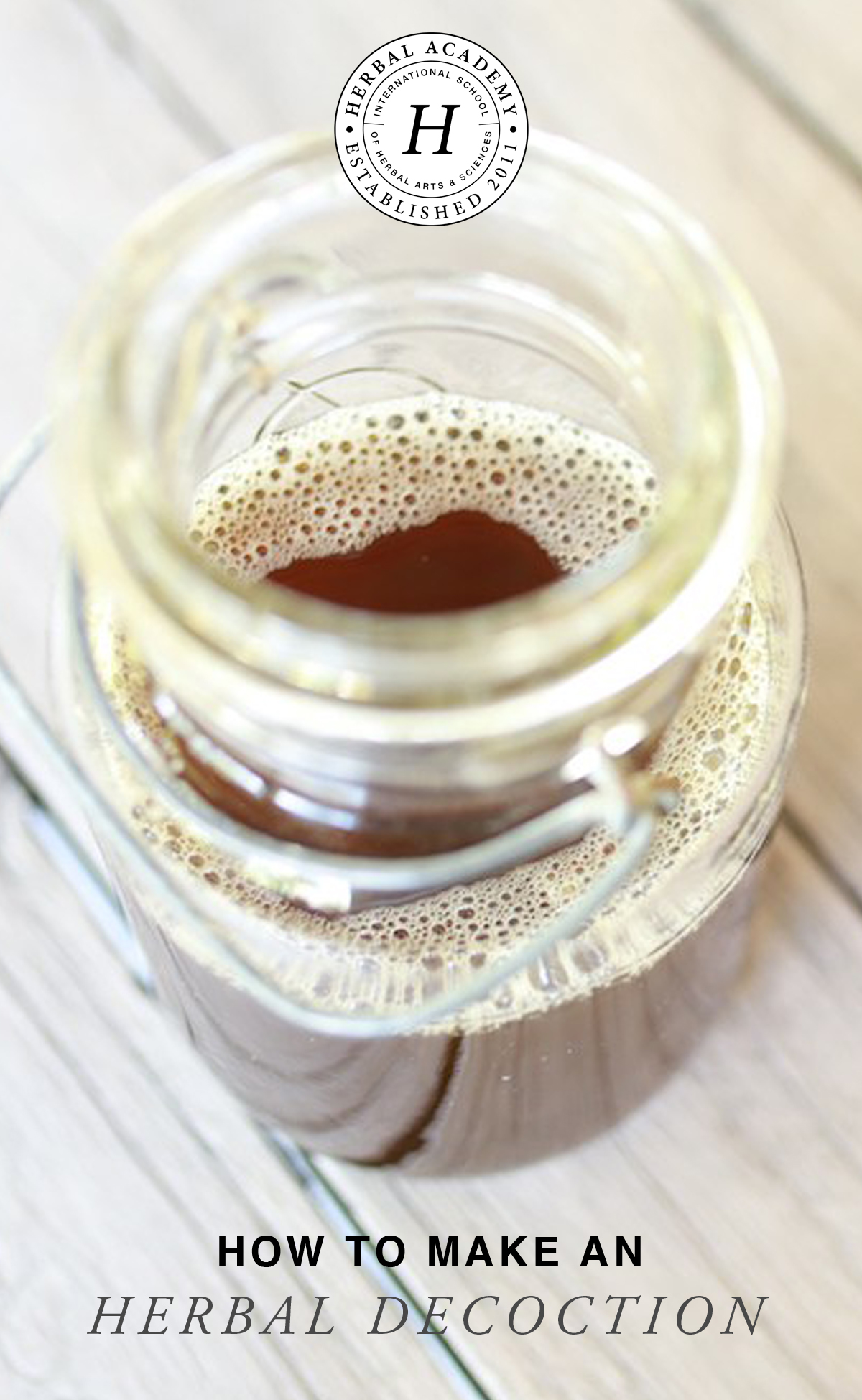
REFERENCES
Adelmann, Marlene. (n.d.). Understanding Herbal Preparations. Retrieved on 8/12/2016 from http://herbarium.herbalacademyofne.com/2015/01/understanding-herbal-preparations/
Barbery, Muriel. (2006). The elegance of the hedgehog. New York, NY: Europa Editions.
Davis, Renee. (2013). Turkey Tail Mushrooms & The Antifragility of Immunity Retrieved on 8/10/2016 from http://www.goldrootherbs.com/2013/11/01/materia-medica-turkey-tail-mushrooms-the-antifragility-of-immunity/
Green, James. (2000). The herbal medicine-maker’s handbook. Berkeley, CA: Crossing Press.
Hobbs, Christopher. (1998). Medicinal Mushrooms III. Retrieved on 8/6/2016 from http://www.christopherhobbs.com/library/articles-on-herbs-and-health/medicinal-mushrooms-3/
Hoffmann, David. (2003). Medical herbalism. Rochester, VT: Healing Arts Press.
mcDonald, jim. (n.d.). Herbal Preparations. Retrieved on 8/10/2016 from http://www.herbcraft.org/preparations.html
McIntyre, Anne. (n.d.). Coriander: Coriandrum Sativum Retrieved on 8/11/16 from http://annemcintyre.com/books/articles/coriander/
McIntyre, Anne. (n.d.). Cardamom: Elettaria Cardamomum Retrieved on 8/11/16 from http://annemcintyre.com/books/articles/caradmom/
Moore, Michael. (n.d.). Materia Medica Factsheet: Herbs Best Used As A Strong Decoction. Retrieved on 8/2/2016 from http://www.swsbm.com/ManualsMM/DecoctPrf.txt
Moore, Michael. (n.d.). Materia Medica Factsheet: Herbs Best As Cold Infusion. Retrieved on 8/2/2016 from http://www.swsbm.com/ManualsMM/CldInfus.txt
United Plant Savers. (2012). Species at Risk. Retrieved on 8/ 11/16 from https://www.unitedplantsavers.org/species-at-risk








